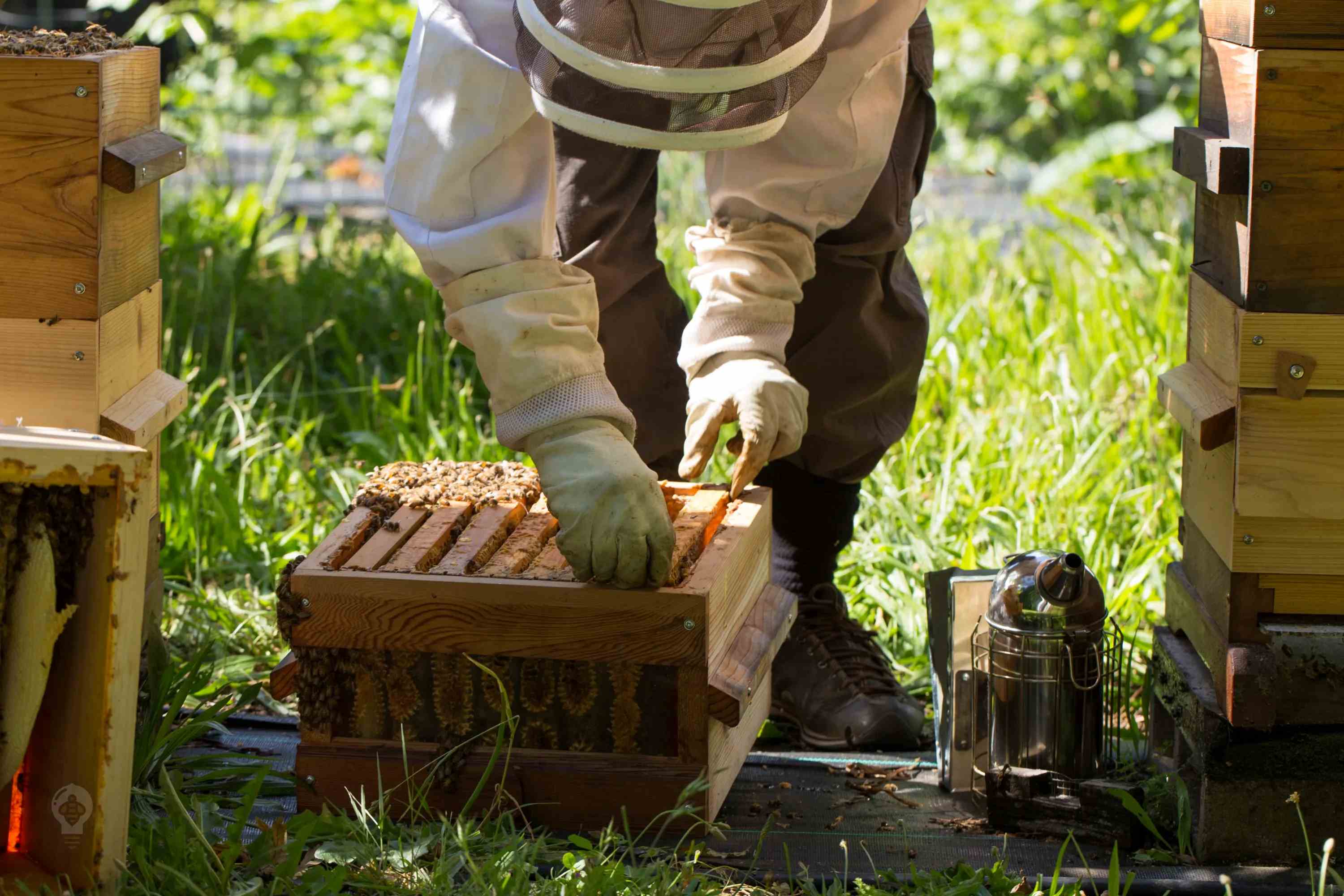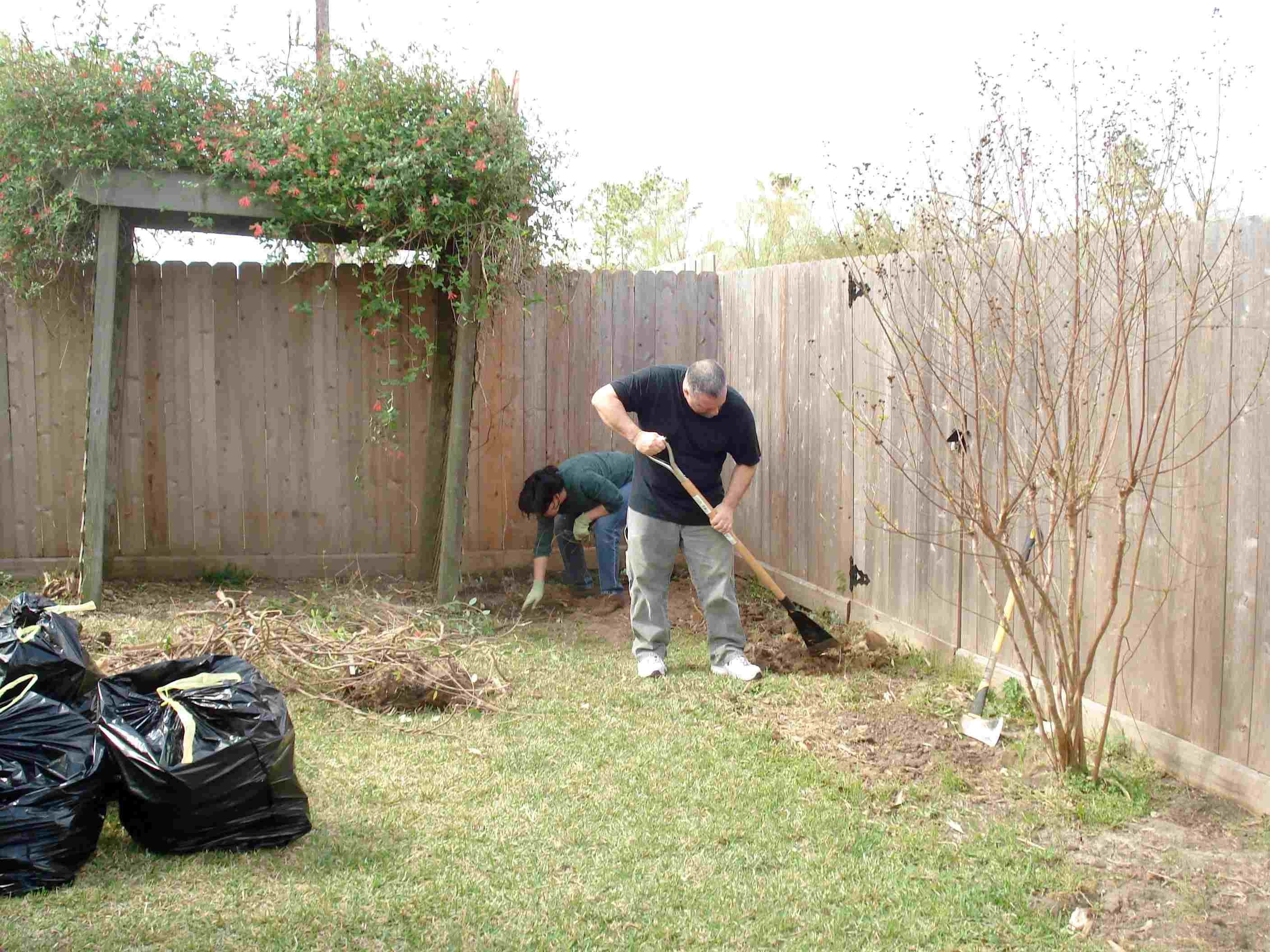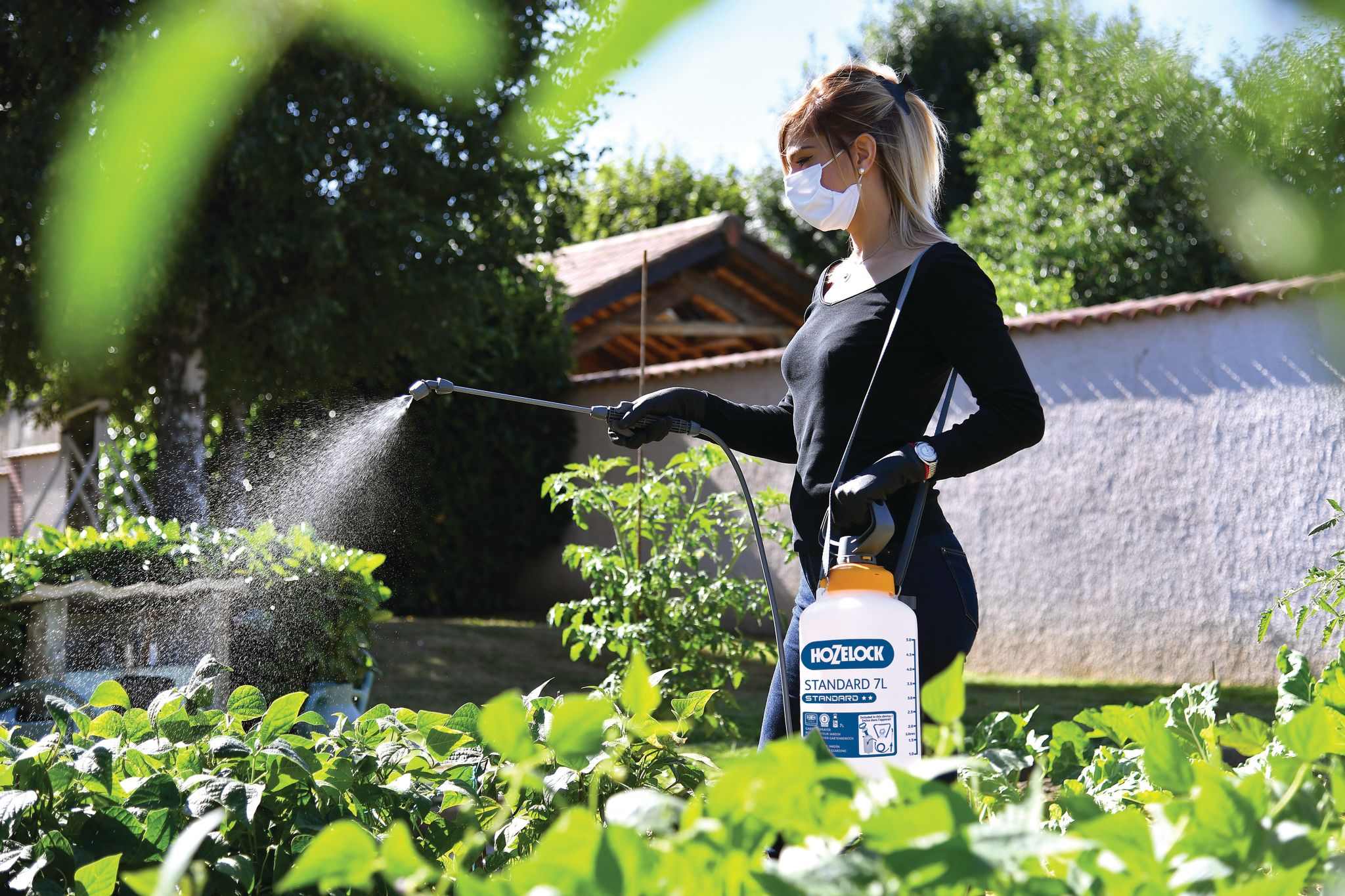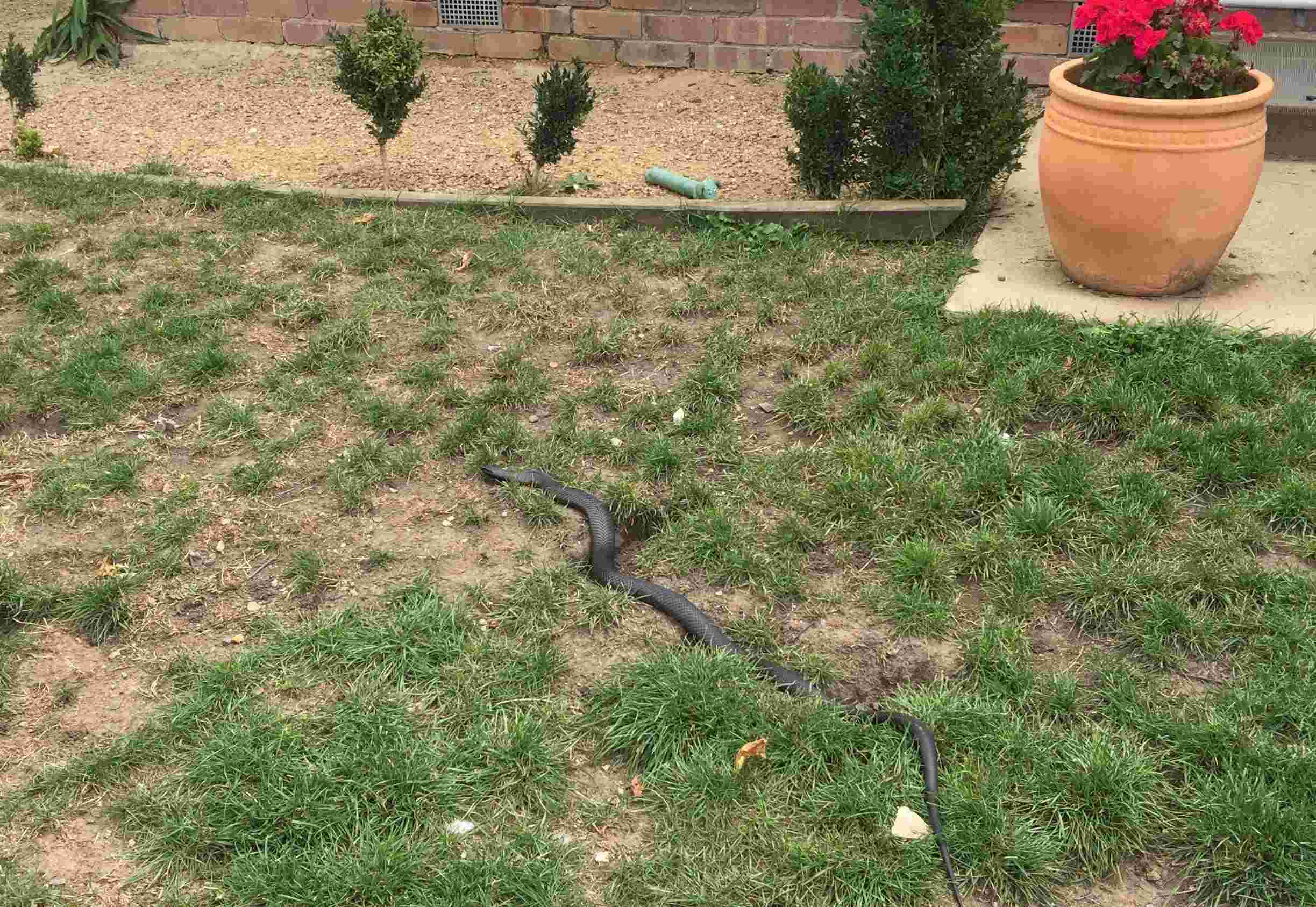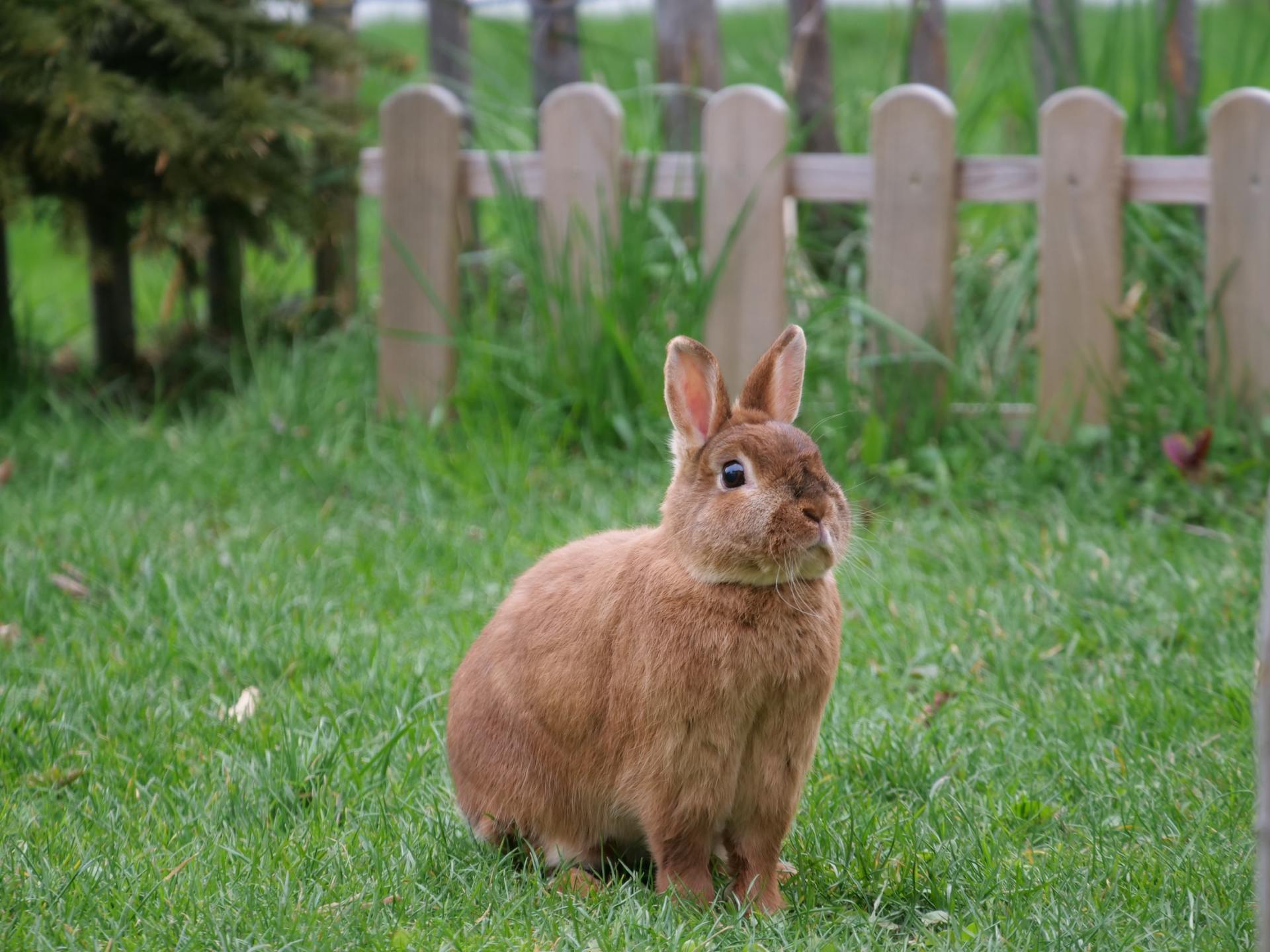Home>Gardening Tips and Tricks>How To Get Rid Of Mosquitoes In The Backyard


Gardening Tips and Tricks
How To Get Rid Of Mosquitoes In The Backyard
Modified: January 22, 2024
Looking for effective ways to solve the problem of mosquitoes in your backyard? Discover how to get rid of mosquitoes and enjoy your outdoor space mosquito-free!
(Many of the links in this article redirect to a specific reviewed product. Your purchase of these products through affiliate links helps to generate commission for Chicagolandgardening.com, at no extra cost. Learn more)
Table of Contents
- Introduction
- Understanding Mosquitoes in the Backyard
- Identifying Common Mosquito Breeding Sites
- Eliminating Standing Water
- Using Mosquito Repellents
- Installing Mosquito Screens or Netting
- Planting Mosquito-Repelling Plants
- Creating a Mosquito-Repelling Barrier
- Encouraging Natural Predators
- Conducting Regular Maintenance
- Conclusion
Introduction
Mosquitoes are a common nuisance that can turn a peaceful backyard into a frustrating battleground. Their itchy bites can ruin outdoor gatherings and their presence can pose a health risk due to the potential transmission of diseases like malaria, dengue fever, and Zika virus. If you’re tired of swatting away these pesky insects and want to reclaim your backyard, you’ve come to the right place.
In this article, we will explore various effective methods to get rid of mosquitoes in your backyard. By understanding their behavior and implementing preventive measures, you can create a mosquito-free environment and enjoy the outdoors without worry.
Before diving into the solutions, it’s important to note that mosquitoes are attracted to standing water. They breed and lay their eggs in stagnant water sources such as puddles, birdbaths, and clogged rain gutters. By eliminating these breeding sites and implementing other proactive measures, you can significantly decrease mosquito populations in your backyard.
So, if you’re ready to reclaim your outdoor space and say goodbye to mosquitoes once and for all, let’s get started!
Understanding Mosquitoes in the Backyard
Before we delve into the methods to get rid of mosquitoes, it’s essential to understand their behavior and lifecycle. Mosquitoes belong to the insect family Culicidae and have been around for millions of years. They are attracted to warm and humid environments, making your backyard an ideal breeding ground.
Female mosquitoes are the ones that bite, as they require a blood meal to nourish their eggs. They are equipped with specialized mouthparts that allow them to pierce the skin and feed on the blood of mammals, including humans. Male mosquitoes, on the other hand, feed solely on nectar and do not bite.
Understanding the life cycle of mosquitoes is key to combating their presence in your backyard. Mosquitoes go through four stages: egg, larva, pupa, and adult. The eggs are laid in standing water and hatch into larvae within a few days. The larvae, commonly known as wigglers, live in the water and feed on organic matter and microorganisms. After several molts, they transform into pupae, which eventually emerge as adult mosquitoes.
It’s crucial to note that mosquitoes have short flight capabilities and tend to stay within a 1-3 mile radius of their hatching site. That’s why effectively managing the mosquito population in your immediate surroundings can have a significant impact on reducing their presence in your backyard.
Now that we have a basic understanding of mosquitoes and their life cycle, let’s explore some practical steps you can take to eliminate these pesky insects from your outdoor space. By implementing the following methods, you can create a mosquito-free haven and enjoy your backyard activities without constant annoyance.
Identifying Common Mosquito Breeding Sites
The first step in effectively getting rid of mosquitoes in your backyard is to identify and eliminate their breeding sites. Mosquitoes require standing water to lay their eggs, and by eliminating these potential breeding sites, you can disrupt their lifecycle and reduce their population.
Here are some common mosquito breeding sites you should be aware of:
- Unused containers: Mosquitoes can breed in any container that collects water, such as buckets, pots, old tires, or even children’s toys left outside. Be sure to empty, clean, and overturn any unused containers to prevent them from becoming breeding grounds.
- Gutters and drainage systems: Clogged gutters or blocked drainage systems can create stagnant water pools, which are perfect breeding sites for mosquitoes. Regularly clean and unclog gutters, ensuring that water flows freely.
- Birdbaths and ornamental ponds: While birdbaths and ornamental ponds can be attractive additions to your backyard, they can also serve as breeding sites for mosquitoes. Change the water in birdbaths every few days and consider adding a small pump or fountain to keep the water moving. For ponds, introduce fish that feed on mosquito larvae, such as goldfish or guppies.
- Pools and spas: If you have an outdoor swimming pool or spa, make sure to keep them properly chlorinated and clean. Empty any stagnant water that collects on pool covers, as mosquitoes can breed there.
- Plant saucers: Overwatered plants with saucers underneath can create standing water, attracting mosquitoes. Avoid overwatering and empty any excess water from plant saucers.
- Tires: Discarded tires are notorious breeding grounds for mosquitoes. Store or dispose of them properly to prevent water from accumulating inside.
By regularly inspecting your backyard and eliminating these common breeding sites, you will significantly reduce the mosquito population and minimize the risk of mosquito-borne diseases.
Eliminating Standing Water
One of the most effective ways to tackle mosquito infestations in your backyard is by eliminating any sources of standing water. As previously mentioned, mosquitoes require stagnant water to breed and lay their eggs. By removing or treating these water sources, you can disrupt their reproductive cycle and reduce the number of adult mosquitoes.
Here are some steps you can take to eliminate standing water and minimize mosquito breeding:
- Regularly empty and clean out gutters, as clogged gutters can collect rainwater and become breeding sites for mosquitoes.
- Keep your garden well-maintained and remove any debris or objects that can collect water, such as old cans, bottles, or discarded containers.
- Ensure that all outdoor containers, including buckets, flower pots, and children’s toys, are properly stored or turned upside down to prevent water accumulation.
- Check and empty any water-holding structures, such as tree holes, birdbaths, or garbage can lids, on a regular basis to prevent mosquitoes from laying eggs.
- Treat ornamental ponds, fountains, or water features with larvicides approved for use in controlling mosquito larvae. These products are safe for plants and animals but deadly to mosquito larvae.
- For swimming pools or spas that are not in use, cover them tightly to prevent water accumulation and treat them with appropriate chemicals to prevent mosquito breeding.
- Ensure proper drainage around your property, as areas with poor drainage can accumulate water and attract mosquitoes.
Remember, even small amounts of standing water can attract mosquitoes. By consistently eliminating and treating these water sources, you can significantly reduce the mosquito population in your backyard and make it a more pleasant and enjoyable space.
Using Mosquito Repellents
In addition to eliminating standing water, using mosquito repellents is an effective way to protect yourself and your family from mosquito bites in your backyard.
There are various types of mosquito repellents available, both chemical-based and natural alternatives. Here are a few options to consider:
- Insect repellent sprays: Look for sprays that contain active ingredients such as DEET, picaridin, or oil of lemon eucalyptus. Apply the repellent according to the instructions on the label, covering exposed skin surfaces. Remember to reapply as directed.
- Citronella candles and torches: Citronella oil, extracted from certain plants, is known for its mosquito-repellent properties. Lighting citronella candles or torches in your backyard can create a barrier and help deter mosquitoes.
- Mosquito coils: Mosquito coils emit a smoke that repels mosquitoes. Place them in strategic areas of your backyard, such as near seating areas, to keep mosquitoes at bay.
- Mosquito repellent plants: Some plants have natural mosquito-repellent properties. Consider planting citronella, lavender, basil, or marigold in pots or garden beds to help deter mosquitoes.
- Mosquito repellent clothing: Clothing treated with insect repellents, such as permethrin, can provide an extra layer of protection. Look for clothing specifically designed for mosquito resistance.
When using mosquito repellents, be sure to follow the instructions and guidelines provided by the manufacturer. Avoid applying repellents to cuts, wounds, or irritated skin, and take precautions when using them on young children or pregnant women.
While mosquito repellents can help deter mosquitoes from biting, it’s important to note that they do not eliminate mosquitoes entirely. Using repellents in conjunction with other preventive measures, such as eliminating breeding sites, will provide a more comprehensive approach to mosquito control in your backyard.
Installing Mosquito Screens or Netting
To create a mosquito-free zone in your backyard, consider installing mosquito screens or netting on doors, windows, and outdoor spaces. Mosquito screens act as a physical barrier, preventing mosquitoes from entering your living areas and outdoor seating areas.
Here are some tips for installing mosquito screens or netting:
- Window screens: Ensure that all windows in your home are fitted with tight-fitting screens to prevent mosquitoes from entering. Check the screens for any tears or holes and repair or replace them as necessary.
- Door screens: Install screen doors with self-closing mechanisms to keep mosquitoes out while allowing fresh air to circulate. Make sure the screens fit properly and that there are no gaps or openings that mosquitoes can squeeze through.
- Patio or gazebo netting: If you have a patio or gazebo where you spend a lot of time, consider installing mosquito netting around the area. This creates a protective barrier that keeps mosquitoes away while still allowing you to enjoy the outdoors.
- Bed netting: In areas where mosquitoes are particularly prevalent, such as tropical regions, using bed netting can provide additional protection while you sleep. Make sure to choose netting that is specifically designed to keep mosquitoes out.
- Camping or outdoor activities: When camping or engaging in outdoor activities, use tents with mosquito netting or bring portable netting to create a bug-proof area.
By installing mosquito screens or netting, you can enjoy the fresh air and outdoor spaces in your backyard without the annoyance of mosquito bites. Make sure to regularly inspect and maintain the screens to ensure their effectiveness.
While screens and netting are effective at keeping mosquitoes out, it’s important to remember that they do not eliminate mosquitoes entirely. It’s still essential to implement other mosquito control measures, such as removing standing water and using repellents, for a comprehensive approach to mosquito prevention in your backyard.
Planting Mosquito-Repelling Plants
If you’re looking for a natural and aesthetically pleasing way to repel mosquitoes in your backyard, consider planting specific mosquito-repelling plants. These plants contain natural compounds that mosquitoes find unappealing, helping to deter them from your outdoor space.
Here are some mosquito-repelling plants you can consider incorporating into your garden:
- Citronella: Citronella is perhaps one of the most well-known mosquito-repelling plants. Its strong citrus scent masks the scent of humans, making it difficult for mosquitoes to locate their targets. Plant citronella in pots or directly in the ground in areas where you spend time outdoors.
- Lavender: Lavender not only adds a beautiful touch to your garden but also has natural mosquito-repelling properties. The strong fragrance of lavender is known to deter mosquitoes, making it an excellent addition to your outdoor space.
- Basil: Basil is not only a favorite herb in the kitchen but also acts as a natural mosquito repellent. Plant basil around your patio or seating areas to keep mosquitoes at bay. Plus, you’ll have fresh basil for cooking!
- Marigold: Bright and vibrant marigolds not only add color to your garden but also repel mosquitoes with their distinct scent. Plant marigolds in pots or in garden beds to create a mosquito-repellent barrier.
- Rosemary: Rosemary is a versatile herb that not only adds flavor to your culinary creations but can also deter mosquitoes. The strong fragrance of rosemary is highly disliked by mosquitoes, making it an excellent plant to have in your garden.
These are just a few examples of mosquito-repelling plants, but there are many more to choose from. Consider the specific conditions of your backyard, such as sunlight and soil type, when selecting which plants to incorporate. Additionally, planting a combination of these plants can enhance their effectiveness and create a more comprehensive mosquito-repelling environment.
It’s important to note that while these plants can help repel mosquitoes, they may not completely eliminate them. Therefore, it’s still essential to combine planting mosquito-repelling plants with other preventive measures, such as removing standing water and utilizing mosquito repellents, for optimal mosquito control in your backyard.
Creating a Mosquito-Repelling Barrier
Creating a mosquito-repelling barrier around your backyard can help prevent these annoying insects from infiltrating your outdoor space. By strategically incorporating certain features and using natural deterrents, you can effectively keep mosquitoes at bay.
Here are some ways to create a mosquito-repelling barrier:
- Plant strategic vegetation: Utilize the power of nature by planting mosquito-repelling plants along the perimeter of your backyard. Consider plants like lemongrass, catnip, rosemary, and citronella, as they naturally contain substances that mosquitoes find unappealing.
- Install outdoor fans: Mosquitoes are weak flyers and have difficulty navigating through strong air currents. Installing outdoor fans around your patio or seating areas can create a deterrent by disrupting their flight patterns and making it more difficult for them to approach.
- Use mosquito-repelling torches: Citronella torches not only provide a pleasant ambiance but also emit a scent that mosquitoes dislike. Place these torches strategically around your outdoor space to create an additional barrier against mosquitoes.
- Consider a mosquito trap: Mosquito traps attract and capture mosquitoes using various mechanisms like UV light, heat, or carbon dioxide. These traps can help reduce the mosquito population in your backyard by luring them away from your living areas.
- Install outdoor screens or curtains: If you have a patio or gazebo, consider installing screens or curtains that can be closed to create a physical barrier between you and the mosquitoes. This can create a more comfortable environment for outdoor activities while keeping mosquitoes at bay.
By implementing these measures, you can create a mosquito-repelling barrier that helps protect your backyard and keeps mosquitoes from intruding on your outdoor enjoyment.
It’s important to note that while these barriers can help minimize mosquito activity, it’s crucial to combine them with other preventive measures, such as eliminating standing water and using mosquito repellents, for a comprehensive approach to mosquito control in your backyard.
Encouraging Natural Predators
Another effective and eco-friendly way to control mosquitoes in your backyard is by encouraging natural predators that feed on these troublesome insects. By attracting and supporting these natural predators, you can create a balance in your ecosystem and reduce the mosquito population naturally.
Here are some natural predators of mosquitoes that you can encourage in your backyard:
- Birds: Many bird species, such as purple martins, swallows, and wrens, feed on mosquitoes and their larvae. Providing birdhouses, feeders, and birdbaths can attract these birds to your yard and create a natural defense against mosquitoes.
- Bats: Bats are voracious insect eaters and can consume a large number of mosquitoes in a single night. Installing bat boxes in your yard can provide these beneficial creatures with a safe habitat, encouraging them to establish residence and help control the mosquito population.
- Dragonflies and damselflies: Dragonflies and damselflies are natural predators of mosquitoes, both in the adult and larval stages. They are highly effective hunters and can significantly reduce mosquito populations. Creating a water feature in your yard, such as a small pond or a shallow container with plants, can attract dragonflies and damselflies.
- Fish: Certain fish, such as gambusia (mosquito fish) and goldfish, feed on mosquito larvae. Introducing these fish into ornamental ponds, stagnant water features, or natural water bodies on your property can help control mosquito breeding and larvae population.
- Beneficial insects: Ladybugs, lacewings, and certain types of wasps are natural predators of mosquitoes and other harmful insects. Planting flowers and herbs that attract these beneficial insects can create a welcoming habitat for them in your backyard.
By providing a conducive environment for these natural predators, you can establish a natural balance in your backyard ecosystem. This promotes a sustainable and effective approach to mosquito control without relying solely on chemical methods.
Remember, it’s important to avoid using chemical pesticides that can harm these natural predators. Embracing a more holistic approach by encouraging natural predators will not only help control mosquitoes but also contribute to a healthier and more diverse ecosystem in your backyard.
Conducting Regular Maintenance
Maintaining your backyard regularly is essential in keeping mosquitoes at bay. By staying proactive and implementing routine maintenance practices, you can effectively reduce mosquito populations and create a more mosquito-free environment.
Here are some key maintenance tasks to consider:
- Trim vegetation: Mosquitoes are attracted to shady and damp areas where they can rest and find shelter. Regularly trim bushes, shrubs, and tall grasses to eliminate their hiding spots and expose them to natural predators like birds and bats.
- Keep your lawn mowed: Shorter grass reduces mosquito resting areas and makes it harder for them to breed. Regularly mow your lawn and keep the grass at an appropriate height to discourage mosquito activity.
- Remove debris: Mosquitoes can find breeding grounds in piles of leaves, fallen branches, and other garden debris. Clean up and dispose of any accumulated debris in your yard to eliminate potential breeding sites.
- Check for leaks: Fix any outdoor faucets, sprinklers, or irrigation systems that may create areas of excessive moisture. Mosquitoes are attracted to stagnant water, so ensuring that your yard is free from unnecessary moisture will deter them from breeding.
- Repair screens and seals: Regularly inspect screens on windows, doors, and outdoor enclosures for any tears or holes. Repair or replace damaged screens to ensure they are effective in keeping mosquitoes out.
- Remove standing water: As mentioned earlier, standing water is the primary breeding ground for mosquitoes. Regularly inspect your property for any containers, such as empty buckets, flowerpots, and gutters, that may collect water. Empty and clean them to eliminate potential mosquito breeding sites.
- Inspect outdoor furniture: Check your outdoor furniture, cushions, and umbrellas for any areas where water can collect and become stagnant. Remove any water and dry these items thoroughly to prevent mosquitoes from nesting and breeding.
By incorporating these regular maintenance tasks into your routine, you can effectively minimize potential mosquito breeding sites and reduce their presence in your backyard.
Remember, prevention is key when it comes to managing mosquitoes. By consistently maintaining your backyard and implementing other preventive measures, you can create a more enjoyable outdoor space for you, your family, and your guests.
Conclusion
Dealing with mosquitoes in your backyard can be frustrating, but with the right knowledge and proactive measures, you can significantly reduce their presence and reclaim your outdoor space. By understanding their habits and lifecycle, identifying common breeding sites, and implementing preventive strategies, you can create a mosquito-free environment for your family and friends to enjoy.
Eliminating standing water and using mosquito repellents are effective ways to deter mosquitoes. Installing screens or netting, planting mosquito-repelling plants, and creating a barrier with natural predators can provide additional layers of protection. And don’t forget the importance of regular maintenance to keep your backyard in mosquito-free shape.
Remember, it’s essential to strike a balance between effective mosquito control and maintaining a safe and healthy environment for other beneficial insects and wildlife. Avoid the unnecessary use of harmful chemicals and embrace more natural methods when possible.
By incorporating these practices into your routine and staying vigilant, you can create a backyard oasis free from the annoyance of mosquitoes. Enjoy the outdoors, host gatherings, and make lasting memories without the constant swatting and itching. Your backyard is meant to be a haven – one where mosquitoes don’t stand a chance.
